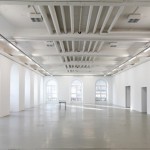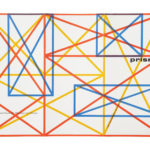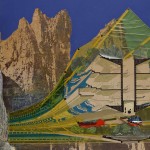Gustavs Klucis (1895 – 1938) was a painter, sculptor and graphic designer. He was born in Latvia, but spent most of his life in Moscow, until being a victim of Stalin’s purges in 1938. After taking part in the October revolution and serving as Lenin’s guard, a young Klucis started his studies in arts at the renowned school of applied arts of VKhUTEMAS in Moscow in 1918, where he later worked as a teacher. (For more informations on the Vkhutemas, read Ross Wolfe’s posts on The Charnel House).
For the most part, Klucis experimented with poster-art through the medium of collage, designing spaces and structures in which the border between reality and abstraction gets faded. Works as the mobile poster stands and the broadcasting towers, both unrealized but widely advertised, made him an important exponent of Russian Constructivism.
Through his whole body of works, borders between disciplines as art, architecture and graphic design are constantely blurred. Klucis also embraced the celebration of new technologies, such as cinema, photography and radio as he believed that they carried on the potential to tear down barriers between forms of art. His pioneering photomontages employed bold compositions as a means to communicate in a very direct way to a mass audience.












Via: Library (gramatas.tumblr.com)





Awsome work very inspirering